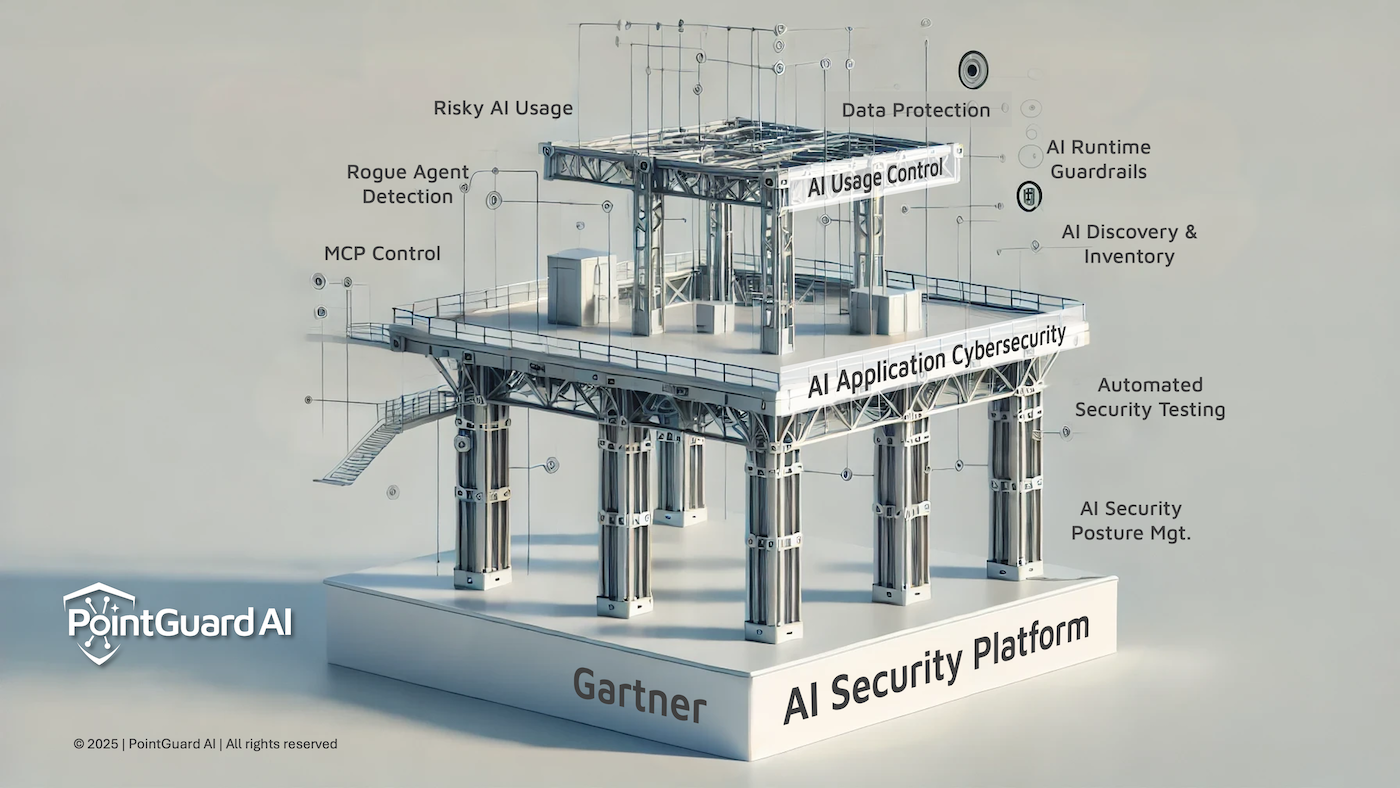In its Top Strategic Technology Trends for 2026 report, Gartner has placed AI Security Platforms (AISPs) among the most critical and urgent technologies shaping the future of enterprise IT. While generative AI continues to accelerate innovation, it is simultaneously exposing organizations to a new category of AI-native security risks that traditional cybersecurity tools cannot address. Gartner’s analysis underscores that securing AI systems—both third-party AI services and custom-built AI applications—requires a dedicated platform approach.
As Gartner writes, “AI security platforms are starting to emerge as a critical pillar to defend against AI-native security risks.” CIOs, CISOs, and technology leaders must now centralize AI security controls to ensure trust, resilience, and long-term success across their AI initiatives.
The Urgency Behind AI Security Platforms
By 2028, Gartner predicts that more than half of enterprises will use AI security platforms, up from less than 10% today. This exponential adoption curve reflects a growing realization: as organizations integrate AI into workflows, customer interactions, and core decision-making, the attack surface is fundamentally changing.
Existing security architectures—built around endpoints, identities, and networks—were never designed to handle threats like prompt injection, data leakage through LLMs, shadow AI, or rogue AI agents making unauthorized decisions. Moreover, most enterprise “no training” policies on data use cannot be technically enforced with conventional tools.
Gartner’s 2025 Cybersecurity Innovations in AI Risk Management and Use Survey found that 81% of organizations are now on their GenAI adoption journey. However, the same survey revealed a rising number of project failures, compliance issues, and AI misuse incidents stemming from inadequate governance. In short, the tools that protect networks and clouds are blind to AI behavior—a visibility gap that makes an enterprise-wide AI security platform indispensable.
Why Traditional Tools Fall Short
Enterprises are discovering that even their most advanced security stacks lack controls for AI’s unique threat vectors. Consider three gaps Gartner highlights:
- No visibility into AI development workflows – Existing AppSec tools don’t see what’s happening in Jupyter notebooks or during model fine-tuning.
- No testing for prompt-based vulnerabilities – Standard vulnerability scanners can’t simulate or detect malicious prompt chains.
- No protection against rogue agents – AI agents that act autonomously can take risky or unintended actions that bypass human oversight.
Cloud-native “guardrails” offered by hyperscalers provide only partial coverage, typically limited to their own environments. For organizations adopting multi-cloud or hybrid AI strategies, Gartner advises favoring cloud-agnostic platforms capable of consistent control and monitoring across the AI life cycle.
.png)
The Two Pillars of the AI Security Platform
At the heart of Gartner’s AISP framework are two interlocking pillars: AI Usage Control (AIUC) and AI Application Cybersecurity (AIAC). Each addresses a distinct but equally vital dimension of AI security.
1. AI Usage Control (AIUC)
AIUC governs how employees and systems interact with third-party AI services—from ChatGPT and Gemini to specialized vertical AI tools. It enforces acceptable use policies, prevents sensitive data leakage, and monitors risky AI interactions.
Key capabilities include:
- Discovery and inventory of third-party AI usage across the enterprise.
- Policy enforcement to block or restrict use of unapproved AI tools.
- Content moderation and data filtering to prevent inadvertent sharing of confidential information.
- Automated AI security testing to identify vulnerabilities in prompts and inputs.
Gartner notes that while AIUC competes with Security Service Edge (SSE) products, it brings AI-native functionality that traditional SSE vendors are only beginning to adopt. As SSE tools evolve to inspect AI traffic, AIUC remains the more specialized, policy-driven layer of defense for managing external AI risk.
2. AI Application Cybersecurity (AIAC)
AIAC extends protection to custom-built AI applications, including in-house LLMs, fine-tuned models, and AI agents. This is where enterprises face the most novel and complex challenges—prompt injection, model poisoning, and rogue agent behavior among them.
AIAC capabilities include:
- Scanning downloaded models for malicious artifacts.
- Automated prompt injection and red-team testing for resilience.
- Multimodal guardrails protecting both text and visual inputs and outputs.
- Agent tracing to detect high-risk or autonomous actions that deviate from policy.
Gartner emphasizes that AIAC delivers end-to-end protection across the AI development life cycle—something no conventional application security or software supply chain tool can achieve. It represents the “second, indispensable pillar” of a mature AI security posture.
The Platform Advantage
Although the AI security market is young—with over 30 startups launched since 2023—Gartner sees clear momentum toward platform consolidation. Most vendors currently specialize in either AIUC or AIAC, but Gartner predicts that unified AISPs offering both will dominate the long term.
The benefits of consolidation are compelling:
- A single inventory of all AI usage and applications.
- Consistent guardrails and content moderation across third-party and in-house AI.
- Unified security testing for continuous assurance.
According to the capability map on page 4 of the Gartner report, a mature AISP integrates these functions into one architecture—bridging visibility, control, and protection across every AI adoption pattern.
A Strategic Priority for the “Vanguard”
Within Gartner’s 2026 trend taxonomy, AISPs are grouped under “The Vanguard”—technologies that enable trust, governance, and digital resilience alongside Preemptive Cybersecurity and Digital Provenance (page 7 figure). This categorization signals that AI security is not just a technical issue—it’s a strategic imperative for sustaining enterprise credibility and compliance in the AI era.
Gartner’s guidance is unequivocal:
“Favor AISP products that offer comprehensive coverage to secure both third-party AI services and custom-built AI apps.”
Enterprises that treat AI security as an extension of existing frameworks risk being left behind by those that embrace a platform-native approach.
How PointGuard AI Helps
PointGuard AI was designed from the ground up to deliver on Gartner’s vision for AI Security Platforms—providing centralized visibility, continuous assurance, and automated defense across the full AI life cycle.
Our platform aligns directly with Gartner’s recommendations in several key ways:
- Unified Architecture: PointGuard AI combines AI Usage Control and AI Application Cybersecurity in a single solution, eliminating the need for fragmented tools.
- AIUC Capabilities: We detect and catalog third-party AI usage, enforce granular data sharing policies, and prevent sensitive content exposure through adaptive guardrails.
- AIAC Capabilities: We secure custom models and AI agents with real-time prompt injection testing, model provenance validation, and rogue agent detection.
- Cloud-Agnostic Security: PointGuard AI integrates seamlessly across AWS, Azure, and Google Cloud, enabling organizations to maintain consistent AI governance in hybrid environments.
- Automated Assurance: Continuous AI risk testing, auditing, and compliance reporting ensure ongoing trust across regulated and high-risk sectors.
By adopting PointGuard AI, organizations can operationalize the AISP model today, rather than waiting for the market to mature. Our mission is to help enterprises “Secure Your Path to AI Adoption”—transforming Gartner’s framework into actionable security outcomes that protect innovation at every stage.







